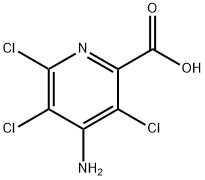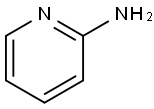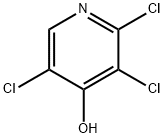Picloram , 95% , 1918-02-1
Synonym(s):
4-Amino-3,5,6-trichloropicolinic acid;4-Amino-3,5,6-trichloropyridine-2-carboxylic acid;Picloram
CAS NO.:1918-02-1
Empirical Formula: C6H3Cl3N2O2
Molecular Weight: 241.46
MDL number: MFCD00012101
EINECS: 217-636-1
| Pack Size | Price | Stock | Quantity |
| 25G | RMB376.00 | In Stock |
|
| 100G | RMB714.40 | In Stock |
|
| others | Enquire |
PRODUCT Properties
| Melting point: | 200 °C (dec.)(lit.) |
| Boiling point: | 421℃ |
| Density | 1.9163 (rough estimate) |
| refractive index | 1.6770 (estimate) |
| Flash point: | >110°(230°F) |
| storage temp. | 0-6°C |
| solubility | Soluble in acetone |
| form | Granules |
| pka | 4.1(at 25℃) |
| color | White, tan |
| Water Solubility | 420 mg/L |
| λmax | 252nm(Phosphate buffer sol.)(lit.) |
| Merck | 14,7397 |
| BRN | 479075 |
| Exposure limits | OSHA PEL: 15 mg/m3 (total), 5 mg/m3 (respirable fraction); ACGIH
TLV: TWA 10 mg/m3, STEL 20 mg/m3. |
| InChIKey | NQQVFXUMIDALNH-UHFFFAOYSA-N |
| LogP | 0.300 |
| CAS DataBase Reference | 1918-02-1(CAS DataBase Reference) |
| IARC | 3 (Vol. 53) 1991 |
| NIST Chemistry Reference | 2-Pyridinecarboxylic acid, 4-amino-3,5,6-trichloro-(1918-02-1) |
| EPA Substance Registry System | Picloram (1918-02-1) |
Description and Uses
Picloram is a colourless crystal. It is very soluble in acetone, ethanol, benzene, and dichloromethane. It is a systemic herbicide used for general woody plant control, sold under the trade names Tordon and Grazon. It also controls a wide range of broad-leaved weeds, but most grasses are resistant. It is used in formulations with other herbicides such as bromoxynil, diuron, 2,4-D, MCPA, triclorpyr, and atrazine. It is also compatible with fertilisers. Picloram, in the pyridine family of compounds, is a systemic herbicide used for control of woody plants and a wide range of broad-leaved weeds. Most grasses are resistant to picloram, so it is used in range management programs. Picloram is formulated either as an acid (technical product), a potassium or triisopropanolamine salt, or an isooctyl ester, and is available as either soluble concentrates, pellets, or granular formulations. The materials in this document refer to the technical acid form unless otherwise indicated. Picloram is stable under acidic, neutral and basic conditions. Picloram is formulated either as an acid (technical product), a potassium or triisopropanolamine salt, or an isooctyl ester, and is available as either soluble concentrates, pellets, or granular formulations and related manufacturing impurities.
Herbicide.
Safety
| Symbol(GHS) |    GHS07,GHS08,GHS09 |
| Signal word | Warning |
| Hazard statements | H412 |
| Precautionary statements | P273-P501 |
| Hazard Codes | Xi |
| Risk Statements | 36 |
| Safety Statements | 26 |
| RIDADR | 3077 |
| WGK Germany | 2 |
| RTECS | TJ7525000 |
| TSCA | Yes |
| HazardClass | 9 |
| PackingGroup | III |
| HS Code | 2933399990 |
| Hazardous Substances Data | 1918-02-1(Hazardous Substances Data) |
| Toxicity | LD50 in rats, mice, rabbits, guinea pig, chickens, sheep, cattle (mg/kg): 8200, 2000-4000, 2000, 3000, 6000, >1000, >750 orally (Mullison) |




